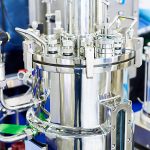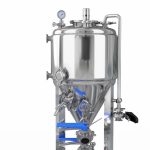As the world increasingly seeks cleaner, more efficient energy sources, LPG (Liquefied Petroleum Gas) is emerging as a popular alternative. LPG is widely used in various fields such as heating, cooking, transportation, and industrial production. As a low-carbon and environmentally friendly solution, the global demand for the uses of LPG cylinders is continuously growing. With its growing global demand, LPG tanks play a crucial role in safely storing and transporting this vital energy source. But how exactly are these tanks used across different industries, and why are they so essential?
LPG tanks are essential for storing and distributing LPG in many sectors.The uses of LPG cylinders include heating, cooking, and hot water, particularly in areas without natural gas access.In transportation, LPG powers vehicles and industrial equipment, offering a cleaner alternative to traditional fuels. Additionally, LPG tanks are crucial in industries like manufacturing and agriculture, where they provide reliable energy for high-temperature processes and crop drying.
In this article, we’ll explore the various uses of LPG tanks and how they support everything from daily life to large-scale industrial operations.
What is LPG and Why is it Stored in Tanks?
LPG (Liquefied Petroleum Gas) is a flammable mixture of hydrocarbons, primarily propane and butane, that is liquefied for storage and transportation purposes. When in its liquid state, LPG is highly compact, making it easier to store and transport. Given its versatility and growing demand, LPG is stored in specially designed LPG tanks that can safely hold this substance under the necessary pressure and temperature conditions.
These tanks are designed to prevent accidents like leaks, explosions, or fires, and to ensure that LPG remains in its liquid form for ease of use in various applications.
Uses of LPG cylinders in Residential and Commercial Applications
LPG tanks are essential in many households and businesses. Their versatility makes them the preferred solution for storing and distributing LPG across different sectors.
Residential Heating

In off-grid areas or regions without natural gas pipelines, LPG tanks are a primary source of heating. Homeowners use LPG for central heating systems or space heaters. LPG tanks provide a reliable and energy-efficient solution for maintaining warmth in colder climates.
Cooking Appliances

LPG is widely used for cooking in both residential homes and commercial kitchens. Gas stoves, ovens, and cooktops powered by LPG offer fast and precise temperature control, making them ideal for cooking. The use of LPG also reduces dependency on electricity and helps cut costs, especially in areas with unreliable electricity supply.
Water Heating

LPG tanks are commonly used to power water heaters, providing a convenient solution for hot water needs in homes and businesses. Whether it’s for showers, cleaning, or cooking, LPG-powered water heaters offer rapid heating without the delays associated with electric water heaters.
Refrigeration
In certain refrigeration systems, especially in remote or off-grid locations, LPG can be used as a refrigerant. The absorption refrigeration systems powered by LPG are energy-efficient and can be found in places such as rural households, farms, and mobile homes.
Uses of LPG cylinders in Transportation

LPG’s versatility extends beyond residential and commercial uses to the transportation sector.
Alternative Fuel for Vehicles
LPG-powered vehicles are a common sight in many countries. Autogas, the name given to LPG when used as vehicle fuel, is a more environmentally friendly alternative to gasoline and diesel. It produces fewer carbon emissions, making it a popular choice for reducing the carbon footprint in urban areas.
LPG Tanks for Cars: These tanks are designed to store LPG at high pressure, typically ranging from 120 to 200 bar, allowing for a significant amount of fuel to be stored in a small, compact space.
Buses, Trucks, and Forklifts: LPG is also used in larger vehicles, such as buses, trucks, and forklifts, as it offers a cleaner alternative to traditional fuels, which helps to reduce operational costs and emissions.
Industrial Uses of LPG cylinders
The industrial sector is another major consumer of LPG, with LPG tanks playing a key role in multiple applications.
Energy for Industrial Heating
LPG is widely used in industries that require high-temperature processes, such as metalworking, ceramics, and food processing. Large LPG tanks provide a continuous fuel supply for furnaces, kilns, and boilers used in various manufacturing processes.
Raw Material for Chemical Production
LPG is an essential feedstock in the chemical industry. It is used to produce a variety of valuable chemicals, such as propylene, butene, ethylene, and acrylic acid. These chemicals serve as building blocks for plastics, synthetic fibers, and other materials.
Agricultural Use
In agriculture, LPG is used for crop drying and greenhouse heating. Large LPG tanks are used to fuel dryers that remove moisture from crops such as grains and fruits, preventing spoilage. Greenhouses use LPG-powered heating systems to maintain optimal growing conditions in colder climates.
Safety Measures and Guidelines for Using LPG cylinders
While LPG tanks are indispensable in a variety of sectors, handling and storing them safely is crucial to prevent accidents. Below are some key safety considerations:
Proper Installation and Ventilation
LPG tanks should be installed in well-ventilated, open areas, preferably at ground level. For industrial setups, ensuring proper mechanical ventilation can reduce the risk of gas accumulation in case of a leak.
Protection from Heat and Ignition
LPG tanks must be kept away from heat sources or any potential ignition sources. Fire-resistant barriers should be installed to protect the tanks, and combustible materials should be kept at a safe distance.
Leak Detection and Emergency Systems
Regular leak detection systems, such as gas sensors and alarm systems, should be installed in areas where LPG tanks are used. Emergency shutdown systems should be in place to immediately stop the flow of gas in case of a leak.
Regular Maintenance
Routine inspections and maintenance are essential to keep LPG tanks in optimal condition. Pressure-relief valves should be checked regularly to ensure that the tank is not under excessive pressure, which could lead to catastrophic failures.
Conclusion: The Versatility and Vitality of LPG cylinders
LPG tanks serve as the backbone for safely storing and transporting LPG for a wide range of uses, from residential heating and cooking to industrial applications and vehicle fuel. With the growing demand for cleaner, more efficient energy sources, LPG tanks are likely to become even more prevalent in the coming years.
As businesses and households continue to rely on LPG for a variety of applications, it’s essential to ensure that these storage systems are properly maintained and operated in line with safety protocols.
MINNUO specializes in providing custom-made, safe LPG storage solutions that comply with all national and international safety standards. If your business is in need of LPG storage solutions, get in touch with us today and discover how we can help you meet your needs.





